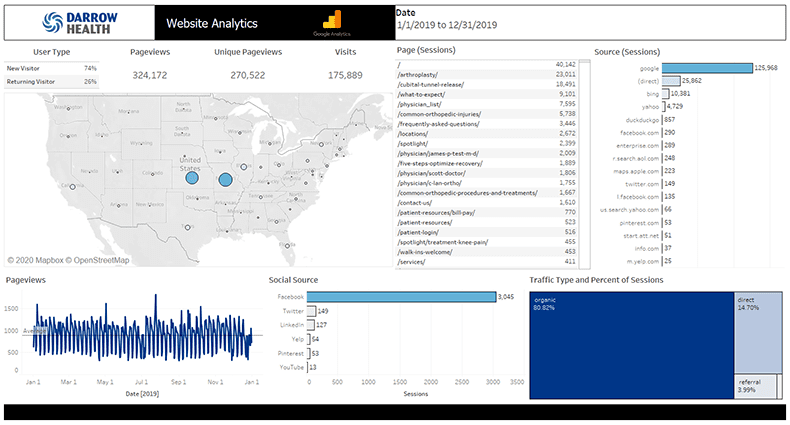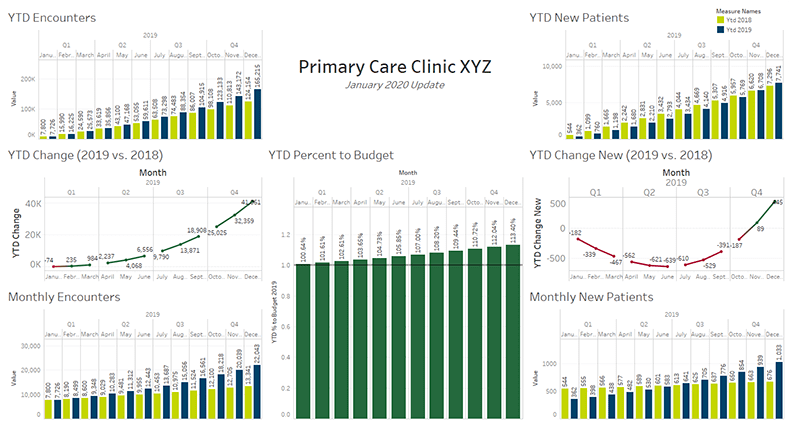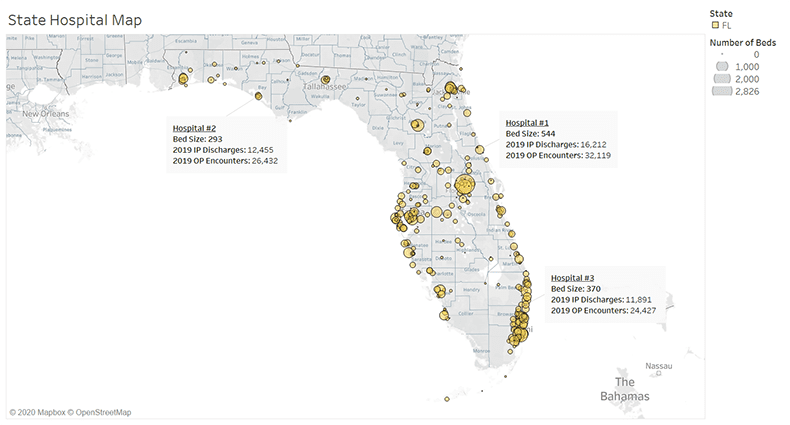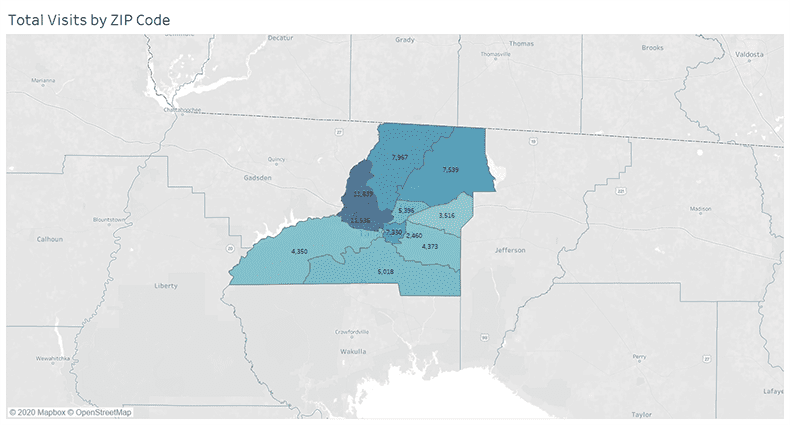Leveraging the Right Data in Your Hospital Marketing Strategy
 Jordan Kloewer, our senior health data analyst, recently led a discussion at the KC HEALTH Communicators’ fall 2022 conference. His presentation, “Data-Driven Marketing: Leveraging Data for Focus and Measuring What Matters Most,” explored best practices for informing smart hospital marketing plans. Key takeaways from Jordan’s presentation are summarized below.
Jordan Kloewer, our senior health data analyst, recently led a discussion at the KC HEALTH Communicators’ fall 2022 conference. His presentation, “Data-Driven Marketing: Leveraging Data for Focus and Measuring What Matters Most,” explored best practices for informing smart hospital marketing plans. Key takeaways from Jordan’s presentation are summarized below.
We all know healthcare generates a huge amount of data. With the volume of information already out there – and the fact that data on healthcare is expected to grow double-digits faster than it will in other major industries like finance and media – a question on every hospital marketer’s mind right now is this:
How do we sort through massive mounds of information to see a clear roadmap for our marketing budget?
Answering that question requires pinpoint strategy. However, many organizations still have a knee-jerk tendency to take the “squeaky-wheel” approach, allocating marketing budgets to those physicians and groups that are most vocal about wanting promotions. But is that wise or sustainable? No, it’s neither.
Decisions about marketing dollars need to dive deep. How much market share can you realistically capture with the funds you have? How can you maximize the reach and efficacy of every dollar you spend on marketing? Is there operational alignment to support the added volume your targeted campaigns will bring? Are you promoting the services people need and want, and will you deliver experiential excellence when they get there – so you can keep the new patients and volume you acquire?
To answer these types of questions, healthcare marketers need to focus on the right findings amid troves of information. The starting point is defining service areas (primary, secondary, tertiary and total). Identifying where the highest density of people live – and then studying the demographics therein – is a good first step toward sharpening your view of what to promote and how to promote it. Today’s programmatic media buying techniques, for example, make it possible to run service line-specific campaigns down to the ZIP code level, so look closely at who you need to reach and where they are.
Beyond studying basic demographics (ages, household sizes and incomes, ethnicities, education levels, etc.), it’s important to understand their particular needs. Market utilization data will help uncover opportunities to expand and keep patients from traveling for care or choosing one of your competitors, which means protecting and growing your market share. The data you assess should answer questions like:
- Where do most of your patients come from, and what health services do they use most?
- Which counties in your service area account for the most discharges year-over-year?
- When you compare your most recent community health needs assessment with the services you provide and how accessible they are, do you see gaps that need to be filled?
- Will marketing alone fill those gaps, or do you need to address operational issues before marketing can begin?
That last question is vitally important. We cannot overemphasize the importance of ensuring operations are in sync with marketing initiatives. For example, if you promote primary care when capacity is so low that patients must wait weeks for routine appointments, your new leads will get frustrated at the outset and go elsewhere. Why spend on marketing that ultimately drives people to your competition?
Speaking of your competitors, keep a close eye on them as well:
- Know their market share and share of voice for key service lines.
- Pay attention to their creative campaigns – not just what they’re promoting but also how they’re promoting it (e.g., the claims they make, the consumer drivers they tap into and ignite, and how they differentiate themselves).
- Assess how you stack up against each other in patient satisfaction (CMS rankings, online ratings, likelihood to recommend), size, location of key service lines and so forth.
Having a detailed view of your competitive positioning will aid strategic planning, spotlighting go-to-market and growth opportunities and uncovering the path forward to seize those opportunities by putting every marketing dollar to good use.
Once you’ve refined your budget allocations, you’ll want to set performance benchmarks and goals, then closely monitor upticks once your campaigns are in market. Assessing increases in patient inquiries and volume, web traffic, social media engagement, ad impressions, clicks and more helps you know at a glance what’s working well and what isn’t, so you can be nimble and quick to pivot messaging and/or spend accordingly.
Track monthly, quarterly and annually, and visualize your findings because numbers on spreadsheets do not tell the real story (at least not well). Frequent-but-consumable reporting will improve your decision-making and help executive, board and physician leadership understand how your marketing efforts will meaningfully contribute to key enterprise strategic objectives.
Looking for the right way to compile, analyze, visualize and utilize all the right data? The solution you seek lies in partnerships. Teaming up with a specialized firm like Dobies Health Marketing is a very valuable marketing investment. We help our hospital and healthcare clients create, execute and analyze smart marketing and positioning strategies to bolster their market share and share of voice. When we dive deep into the data, we’ll emerge with smart, actionable plans for success.
Contact us for strategy-first, data-driven marketing today.
Our special thanks to the KC HEALTH Communicators Board and the Kansas Hospital Association for inviting us to engage with their members on data-driven healthcare marketing strategy – and to the audience themselves, who asked excellent questions and provided valuable feedback.












